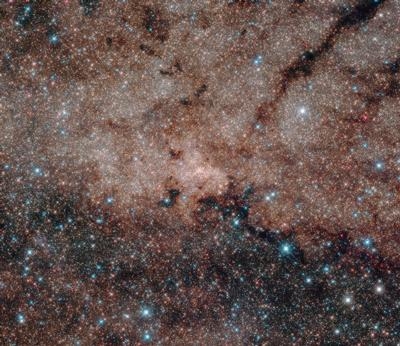GUSTO Will Fly A Telescope On A High-Altitude Balloon
NASA has selected a science mission that will measure emissions from the interstellar medium, which is the cosmic material found between stars. This data will help scientists determine the life cycle of interstellar gas in our Milky Way galaxy, witness the formation and destruction of star-forming clouds, and understand the dynamics and gas flow in the vicinity of the center of our galaxy.

The Galactic/Extragalactic ULDB Spectroscopic Terahertz Observatory (GUSTO) mission, led by principal investigator of the University of Arizona, Christopher Walker, will fly an Ultralong-Duration Balloon (ULDB) carrying a telescope with carbon, oxygen and nitrogen emission line detectors. This unique combination of data will provide the spectral and spatial resolution information needed for Walker and his team to untangle the complexities of the interstellar medium, and map out large sections of the plane of our Milky Way galaxy and the nearby galaxy known as the Large Magellanic Cloud.
“GUSTO will provide the first complete study of all phases of the stellar life cycle, from the formation of molecular clouds, through star birth and evolution, to the formation of gas clouds and the re-initiation of the cycle,” said Paul Hertz, astrophysics division director in the Science Mission Directorate in Washington. “NASA has a great history of launching observatories in the Astrophysics Explorers Program with new and unique observational capabilities. GUSTO continues that tradition.”
The mission is targeted for launch in 2021 from McMurdo, Antarctica, and is expected to stay in the air between 100 to 170 days, depending on weather conditions. It will cost approximately $40 million, including the balloon launch funding and the cost of post-launch operations and data analysis.
The Johns Hopkins University Applied Physics Laboratory in Laurel, Maryland, is providing the mission operations, and the balloon platform where the instruments are mounted, known as the gondola. The University of Arizona in Tucson will provide the GUSTO telescope and instrument, which will incorporate detector technologies from NASA’s Jet Propulsion Laboratory in Pasadena, California, the Massachusetts Institute of Technology in Cambridge, Arizona State University in Tempe, and SRON Netherlands Institute for Space Research.
NASA's Astrophysics Explorers Program requested proposals for mission of opportunity investigations in September 2014. A panel of NASA and other scientists and engineers reviewed two mission of opportunity concept studies selected from the eight proposals submitted at that time, and NASA has determined that GUSTO has the best potential for excellent science return with a feasible development plan.
NASA's Explorers Program is the agency's oldest continuous program and is designed to provide frequent, low-cost access to space using principal investigator-led space science investigations relevant to the astrophysics and heliophysics programs in agency’s Science Mission Directorate. The program has launched more than 90 missions. It began in 1958 with the Explorer 1, which discovered the Earth’s radiation belts, now called the Van Allen belt, named after the principal investigator. Another Explorer mission, the Cosmic Background Explorer, led to a Nobel Prize. NASA's Goddard Space Flight Center in Greenbelt, Maryland manages the program for the Science Mission Directorate in Washington.
(Image provided with NASA news release)
 ANN's Daily Aero-Term (04.25.24): Airport Rotating Beacon
ANN's Daily Aero-Term (04.25.24): Airport Rotating Beacon ANN's Daily Aero-Linx (04.25.24)
ANN's Daily Aero-Linx (04.25.24) Klyde Morris (04.22.24)
Klyde Morris (04.22.24) Airborne 04.24.24: INTEGRAL E, Elixir USA, M700 RVSM
Airborne 04.24.24: INTEGRAL E, Elixir USA, M700 RVSM Airborne 04.22.24: Rotor X Worsens, Airport Fees 4 FNB?, USMC Drone Pilot
Airborne 04.22.24: Rotor X Worsens, Airport Fees 4 FNB?, USMC Drone Pilot



